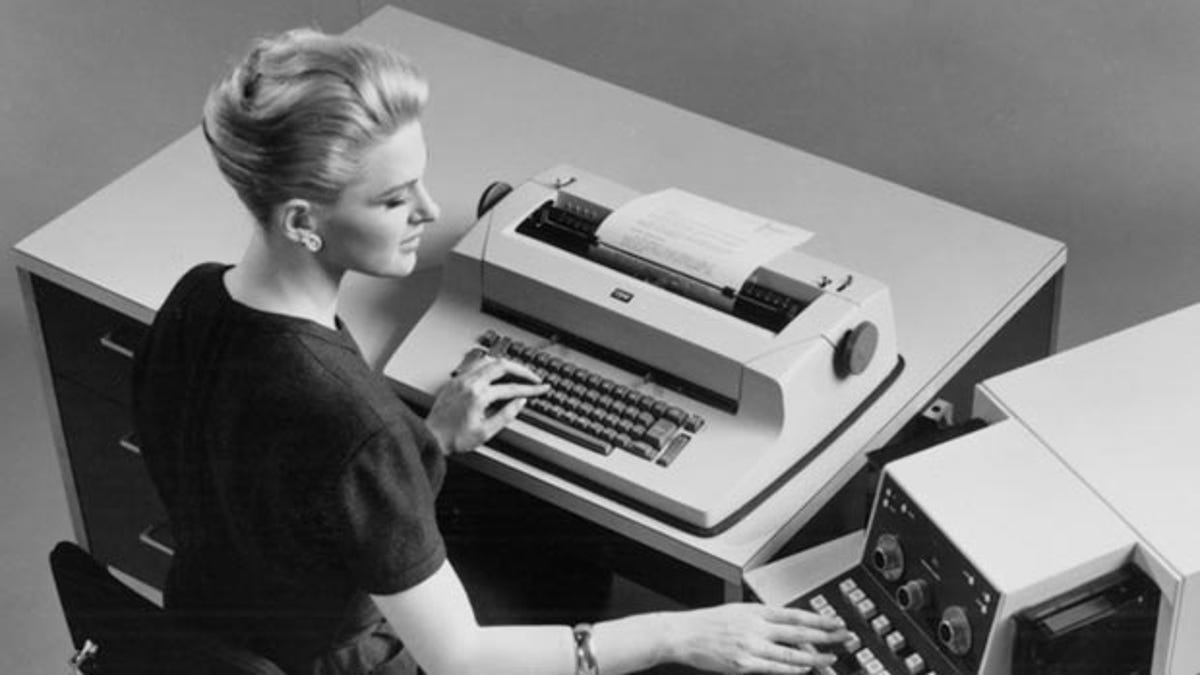IBM celebrates 50 years with the Selectric typewriter
The Selectric is still considered one of the most dramatic improvements in the typewriter space, thanks to its "golf ball" head.

Later this month, IBM will celebrate the 50th anniversary of the Selectric typewriter.
Released on July 31, 1961, the Selectric was unarguably a game-changer in the typewriter space. The device--which took seven years to develop, due mainly to its 2,800 parts--featured a "golf ball" head that moved across the page as users typed. Thanks to that head, the typewriter was the first of its kind to eliminate carriage return, IBM said.
The Selectric has also been tapped as an inspirational predecessor to today's word-processing programs. Users could add different golf balls to the device, allowing them to type with different fonts, in italics, and even in other languages. Magnetic tape, which came to the device in 1964, allowed users to store characters.
"The Selectric typewriter, from its design to its functionality, was an innovation leader for its time and revolutionized the way people recorded information," Linda Sanford, senior vice president for Enterprise Transformation at IBM, as well as a development engineer on the Selectric, said in a statement. "Nearly two decades before computers were introduced, the Selectric laid the foundation for word-processing applications that boosted efficiency and productivity, and it inspired many user-friendly features in computers that we take for granted today."
After it was introduced, the Selectric became a staple in offices across the world, thanks to its slender design (for the time) and vastly improved typing speed. According to IBM, expert typists on the Selectric could offer up 90 words per minute, easily besting the standard 50 words per minute those same folks were tallying on other typewriters.
CNET News managing editor Jon Skillings was one of those people who benefited from the Selectric. In a 2004 CNET story that noted it had been 175 years since the first typewriter was patented, Skillings thought back to the all the things IBM's Selectric brought to the table.
"My first exposure to 'advanced' word-processing technology was the IBM Selectric, with its whirring, hair trigger, head banger of a typing element," he said. "After I'd spent most of college plunking away at an easily gummed-up Olivetti manual, the motorized speed and authority of the Selectric definitely made it easier to crank out those last few (desperate) papers."
The Selectric typewriter was discontinued in 1986 after 25 years of success. According to IBM, by 1986, the company sold 13 million Selectric typewriters worldwide.

